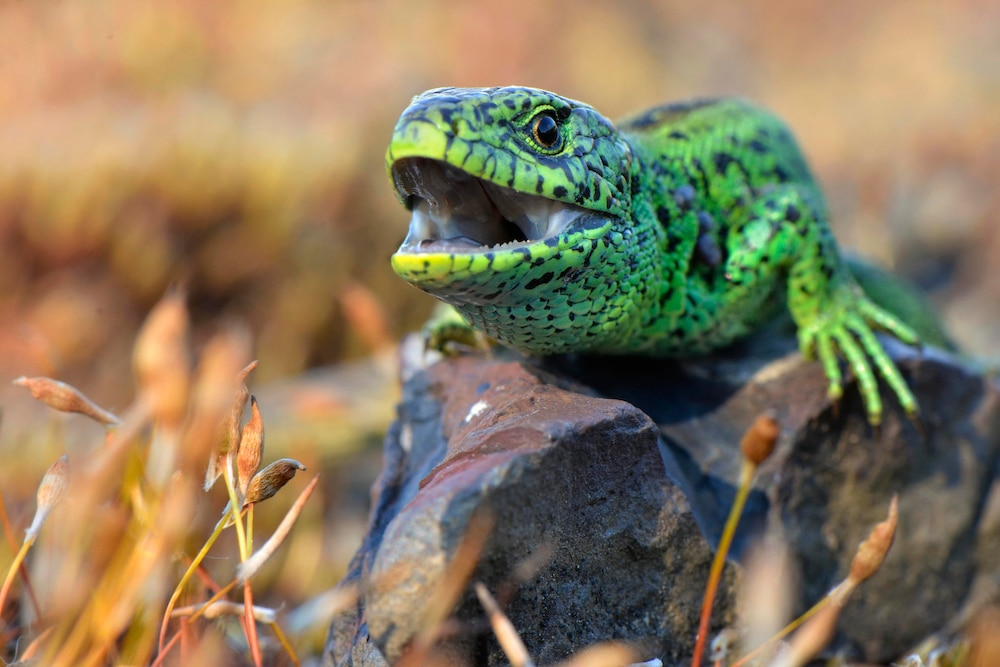Create a free profile to get unlimited access to exclusive videos, sweepstakes, and more!
Evolve fast, die hard. Rapid evolution means a species is more likely to go extinct
Reptile evolution proves that evolving too fast could mean you're more likely to go extinct.

After the asteroid from hell struck Earth 66 million years ago, you would think that creatures which evolved faster in its turbulent wake would emerge as the survivors.
Lepidosaurs that lived at the feet of the dinosaurs would eventually evolve into extant snakes, lizards, legless “worm lizards” or amphisbaenians, and the mysterious tuatara. Within the superorder Lepidosauria are two suborders. The tuatara is the only species left in Rhynchocephalia, while Squamata encompasses everything else; but it wasn’t always that way. There was a time when rhynchocephalians were far more diverse. So what changed?
By studying both extant and extinct lepidosaurs and comparing faster-evolving species to slower-evolving ones, paleobiologist Michael Benton of the University of Bristol, who coauthored a study recently published in Paleontology, found something unexpected. Fast-evolving species showed a record of belonging to unstable groups that didn’t have the time to stabilize with changes in their environment. Slow-evolving groups beat them out.
Benton initially expected to find evidence of slow evolution in rhynchocephalians and slow evolution in squamates.
“There are over 11,000 species of squamates but just one rhynchocephalian,” he told SYFY WIRE. “We assumed both groups might have shown the same characteristics through their existence –– in other slow evolution for rhynchos, and fast evolution among squamates.”
Rhynchocelphalians had already been on a slow decline starting in the Late Jurassic and Late Cretaceous. Before that, they out-evolved squamates when it came to body size. They diversified especially fast during the Mesozoic, from lizard-like things that crawled on land to immense mosasaurs like the one that took down a T. Rex in Jurassic World: Fallen Kingdom (which is complete fiction because they didn’t bother sinking their teeth into prey that plodded around on land). Squamates didn’t have anything close to that morphological diversity.
The earliest rhynchocephalians are thought to have spawned in desert environments and adapted to drier climates, while squamates tended to hang out where there was a moderate amount of moisture and precipitation. That still didn’t stop the rhynchos from spreading out and adapting to different environments, seeing how some of them morphed into some of the most enormous monsters to have ever terrorized the seas. They were Mesozoic innovators that could transform into almost anything and later competed for food with early mammals.
“The rhynchos were already declining through the Late Cretaceous, as far as we can see from the fossil record, so perhaps they had already lost their mojo after 100 million years of the Late Triassic to Jurassic and Early Cretaceous,” said Benton.
Late Cretaceous lizards and snakes had also begun to diversity more than they ever had, which meant more species would survive the eventual asteroid apocalypse. It was previously thought that fast-evolving subgroups like Rhynchocephalia would not be able to sustain themselves in the long run. They would eventually have to evolve at a slower rate or face extinction. Meanwhile, squamates were evolving slowly, but species would add up over the eons. Lepidosauria had appeared on the scene 250 million years ago and it still isn’t going anywhere.
Why exactly rhynchocephalians bit the dust is still debated. They once evolved at twice the rate of squamates, and though they had started to decline long before the Chixculub asteroid decided their fate for them, squamates were also affected by the impact. Rhynchos perished while squamates flourished in the aftermath. If they had been so adaptable during the Mesozoic, it almost seems to make no sense, but the instability of this subgroup could have been their downfall. It doesn’t really help to be caught in a nuclear winter when you’ve recently evolved for something else.
“For whatever reasons, all these groups died out in the Early Cretaceous, and lizards and snakes flourished with a broad array of dietary adaptations, even though their diversity back then was probably much lower,” Benton said. “Squamates then continued to diversify through the Late Cretaceous.”
As for the tuatara, why it was the only rhynchocephalian to survive is still uncertain. The fossil record hasn’t revealed much. Maybe, in some way, this living fossil will.


























